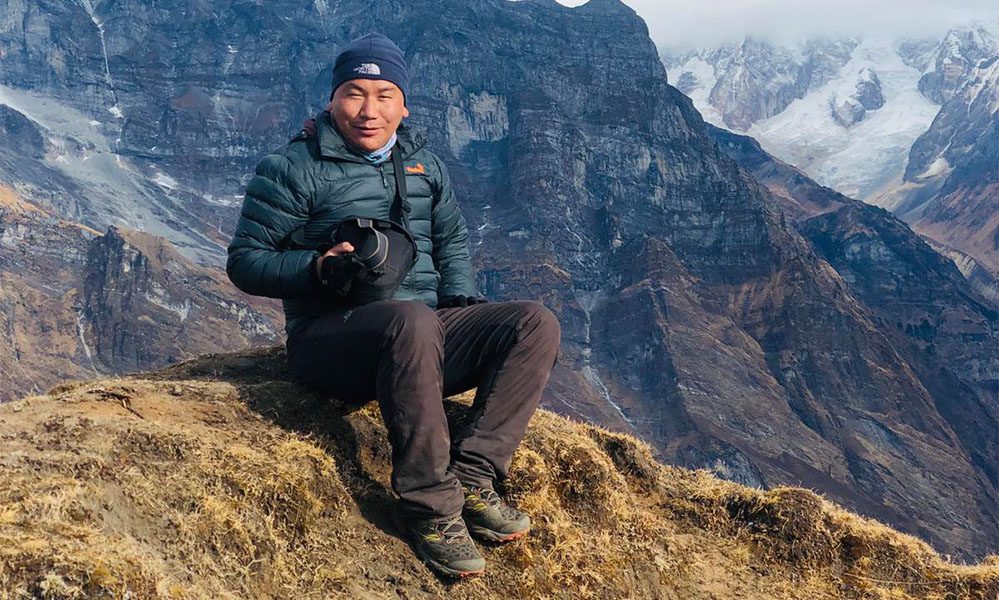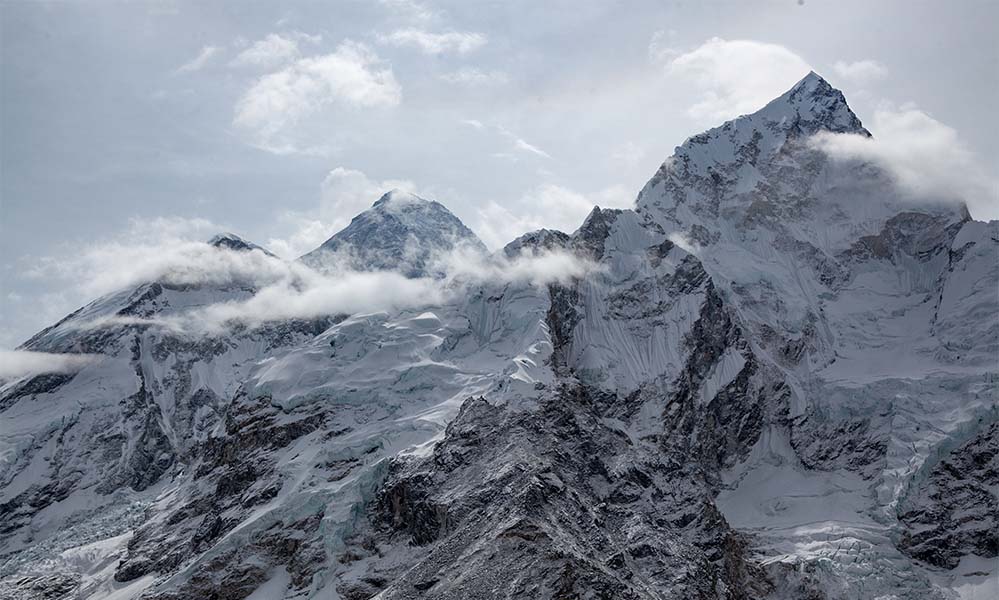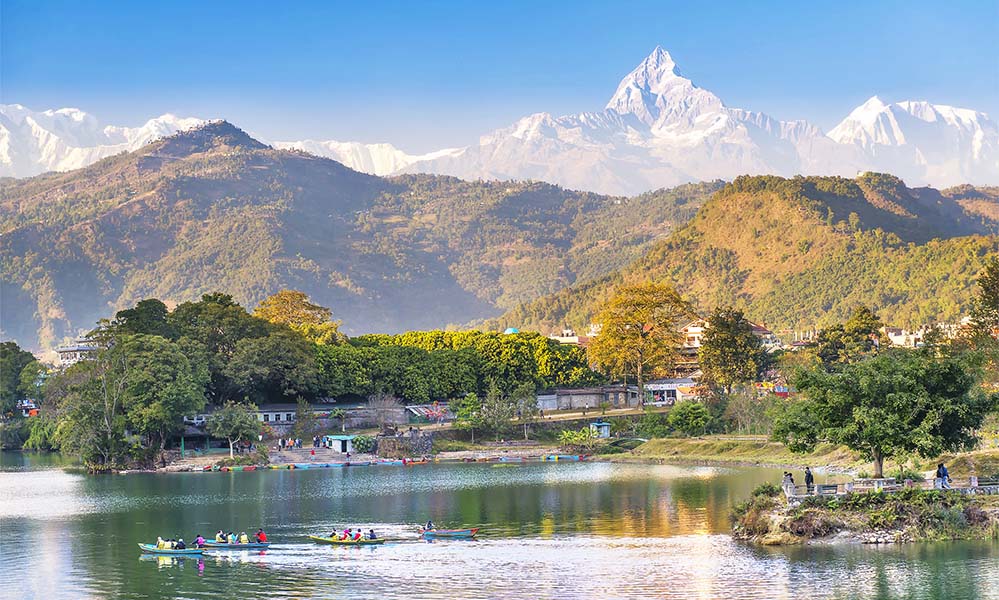Ever wanted to know more about the Sherpa guides who facilitate treks and climbs to Himalaya wonders? Curious to know their favorite places in Nepal and what their everyday life is like? Our friend (Super) Phula Sherpa was kind enough to share his story and insights from a significant amount of time living and climbing at high altitudes.
Born in the area of Jantarkhani in Nepal’s eastern region, he began his profession as a climbing guide in the Himalaya. Having summited numerous peaks above 8,000 meters, he is qualified by the Nepal Mountaineering Association and is one of the most significant resources available to trekkers planning high-altitude Himalayan treks.
NE: How did you start guiding? Who or what inspired you?
Phula: I began trekking in 2007 as a porter, then became an assistant guide in 2008 and began guiding in 2010. My brother was a good climber, and he used to make a part of his every expedition with me, so I was motivated by him.
NE: What are some of the expeditions that you lead?
Phula: So far I’ve led Mt. Everest, Island Peak, Lobuche Peak, and other similar elevation mountain expeditions.
NE: What can you tell me about your Sherpa village? What is life like there?
Phula: Jantarkhani, Okhaldhunga, where I was born, was a small community with few resources. To get drinking water, we had to trek more than a mile. There were no educational institutions, communication platforms, or transportation available at the time. Therefore life was difficult. However, things have begun to change in recent years, and we are seeing progress.
NE: What is your favorite part about being a guide?
Phula: My favorite part is meeting individuals from all over the world and having the opportunity to share their culture and mine.
NE: Why do Sherpa mountaineers not seek fame or a greater level of recognition for their climbing accomplishments—as do many of the people they assist to summit Everest?
Phula: Sherpa mountaineers aren’t looking for recognition because climbing Everest is our passion, and it’s our pleasure to help others reach the summit.
NE: Please share a favorite travel memory—from anyplace you’ve adventured to.
Phula: In the year 2014, I got an opportunity to lead a group of Canadian Trekkers on the Annapurna Circuit Trek. Annapurna Trek is a classic Himalayan trek taking just over two weeks to complete, reaching altitude 17,782 feet. The trails along the way are well maintained and you hike over one of the world’s highest trekking passes.
I recall that on the tenth day of trekking, the weather began to deteriorate and soon it began to snow. Despite the snow, we continued on our journey because I was conscious that if we stopped, we could become trapped in the jungle. We arrived at our camp, Yak Kharka, after a long and exhausting journey. The snow continued to fall. The majority of other trekkers decided to return from Yak Kharka since the trails were covered in snow and it was difficult to discern the path. But we didn’t have an option; my guests had to get to Kathmandu on time because they were on a tight schedule and didn’t want to miss their outgoing flight.
We couldn’t repeat the trail because it would take another two days. We considered a helicopter evacuation but were unable to do so owing to the inclement weather. As a result, my assistant guide and I opted to push on and descend via Thorung La Pass. To keep warm from the snow, I put a plastic sheet over my shoulders and started following a fox’s footprint. I was able to effectively lead the group to Thorung La Pass in such bad weather thanks to my previous experience and the animal footprints.
As I approached the pass and turned my gaze to my companions, the plastic I was wearing was blowing by the wind like a cape, and I was transformed into Superman. “Super Phula” was the nickname given to me by my clients. Super Phula has been my tag in the mountains since then. I’m grateful for all of my team’s and clients’ efforts in completing this hard hike around Annapurna. That is a beautiful moment that I will cherish for the rest of my life.
NE: What is your favorite mountain to climb—or your favorite trek—and what makes it so special?
Phula: My favorite mountain to climb is Ama Dablam, which is a magnificent and technical mountain. My favorite trip is to Mardi Himal Base Camp, where we feel as if we are above the clouds.

NE: How much does a summit trip cost? What does that cost cover?
Phula: Summit prices vary depending on the company; some charge a lot and provide excellent service, others provide modest prices for both lodging and service. Average total cost is around $50,000. That includes all lodging, meals, licenses, staff salaries, staff insurance, and staff equipment.
NE: What level of skill and strength must a climber have to attempt Everest? What is the skill level required to trek to South Base Camp?
Phula: Climbers must be psychologically and physically strong, and they should have considerable climbing experience.
When it comes to trekking to the base camp, most people can do it if they are reasonably physically fit. The high altitude is certainly a factor, so those who acclimate easily do much better.
NE: Can you name any movies or books that most accurately depict the challenges of Everest?
Phula: Many films and documentaries have been made about Everest, but none have been wholly shot on location. Nobody has made a movie on location of the entire climb since it is too difficult for everyone. I think the movie “Everest” released in 2015 is a film that truly depicts Everest’s hardships.
NE: What is the best view of Everest if you’re not going to climb it?
Phula: Nomadic Expeditions’ trek to Everest Base Camp—the best view is from Kalapathar (5,550; if you want a shorter journey, the best view is from Pikey Peak (4,046m).

NE: What are your favorite places in Nepal apart from the climbing and trekking?
Phula: I am fond of travelling to Pokhara. Every time feels like the first time while travelling to Pokhara.
Besides, Pokhara? National Parks Excursion. Illam, Bandipur, Rara Lake, Phoksundo Lake, and Tilicho Lake.
Pokhara is known as the “Lake City.” Pokhara has various lakes, the most notable of which being Fewa Lake, Rupa Lake, and Begnas Lake.

Fewa Lake is by far the most picturesque of these. The Barahi Temple is located on a small island in Fewa Lake. The sun shines brightly off the water, and the mountains smile back at in the reflection. We may wander along the lakeshore and take in the scenery, which is an unforgettable experience. The warm glow of lamp posts hung upon the ingeniously created restaurants and businesses makes Lakeside even more beautiful in the late hours. You can eat here while watching the live performances.
Davis’ Fall, a stunning waterfall, and Buddha Stupa are two other attractions in Pokhara. Then there’s Sarangkot, a colossal hill with a spectacular perspective of Pokhara from its viewpoint. These are the reasons I love travelling to Pokhara.
Similarly, Bandipur is a living museum of Newari culture, a wonderfully maintained settlement atop a steep ridge with traditional row dwellings surrounding its main street. You won’t find mass tourism here, and you won’t be frustrated by intrusive salespeople.
The 18th-century houses have been properly conserved, and the village is nice and quiet because motorized vehicles are not permitted. I love our nation’s tradition and culture and therefore believe that Bandipur is a fascinating hidden gem in Nepal.
Explore Nepal Journeys
Nomadic Expeditions uniquely unlocks this soaring republic intertwined with the Himalaya.

